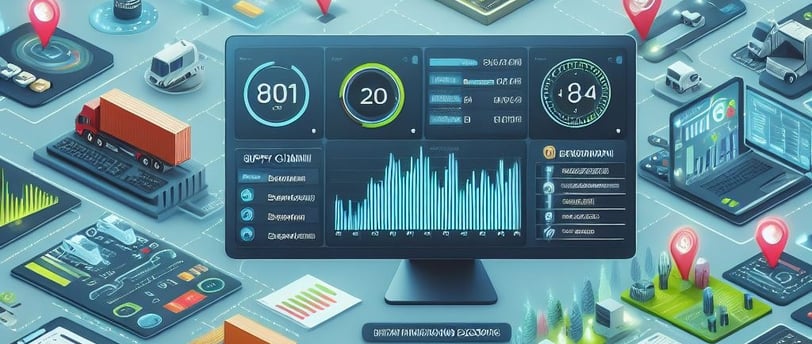StingrayLink: Supply Chain Visibility in the Digital Age
More than meets the eye.
Omar Rebaza
1/30/20242 min read


In today's fast-paced and interconnected world, businesses rely on efficient and transparent supply chains to deliver products and services to their customers on time and within budget. However, traditional supply chains can be opaque and prone to disruptions, making it difficult for businesses to track the movement of goods and identify potential problems.
This is where supply chain visibility comes in. Supply chain visibility refers to the ability to track the movement of goods and materials in real-time, from the point of origin to the final destination. This includes knowing the location, status, and condition of goods at every stage of the journey.
Benefits of Real-time Tracking and Monitoring
Real-time tracking and monitoring of supply chains offer several benefits for businesses, including:
Improved efficiency: By knowing the exact location and status of goods, businesses can optimize their transportation and logistics operations, leading to reduced costs and faster delivery times.
Enhanced customer satisfaction: Real-time tracking allows businesses to provide customers with accurate and up-to-date information about their orders, leading to increased satisfaction and loyalty.
Reduced risk: By identifying potential disruptions early on, businesses can take proactive steps to mitigate them, minimizing the impact on their operations and bottom line.
Improved decision-making: Real-time data insights can help businesses make better decisions about inventory management, sourcing, and other critical aspects of their supply chains.
Technologies Enabling Real-time Tracking and Monitoring
Several technologies are enabling real-time tracking and monitoring of supply chains, including:
Internet of Things (IoT): IoT devices, such as sensors and RFID tags, can be attached to goods to track their location and condition in real-time.
Blockchain: Blockchain technology can provide a secure and tamper-proof record of the movement of goods through the supply chain.
Cloud computing: Cloud-based platforms can collect, store, and analyze data from various sources to provide real-time insights into supply chain operations.
Artificial intelligence (AI): AI can be used to analyze data from various sources to identify patterns, predict disruptions, and recommend corrective actions.
Challenges and Considerations
While real-time tracking and monitoring of supply chains offer significant benefits, there are also some challenges to consider, such as:
Cost: Implementing and maintaining the necessary technologies can be expensive for businesses.
Data security: Ensuring the security of data collected from IoT devices and other sources is essential.
Integration: Integrating real-time tracking and monitoring systems with existing enterprise resource planning (ERP) and other systems can be complex.
The Future of Supply Chain Visibility
Despite the challenges, the future of supply chain visibility is bright. As technologies continue to evolve and become more affordable, real-time tracking and monitoring will become increasingly commonplace. This will enable businesses to create more efficient, transparent, and resilient supply chains, ultimately leading to improved customer satisfaction and business success.
In conclusion, supply chain visibility is essential for businesses in the digital age. Real-time tracking and monitoring of goods and materials can provide businesses with valuable insights that can help them improve efficiency, reduce risk, and make better decisions. As technologies continue to evolve, real-time tracking and monitoring will become increasingly accessible and affordable, making it a key differentiator for businesses in the competitive global marketplace.
